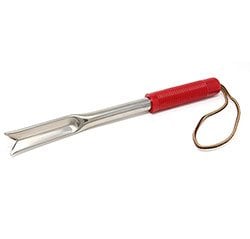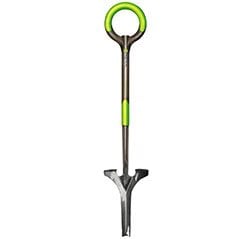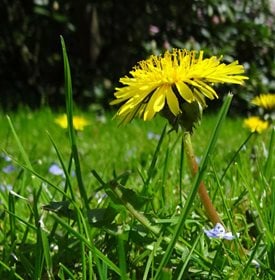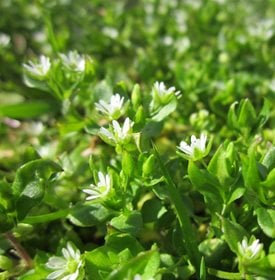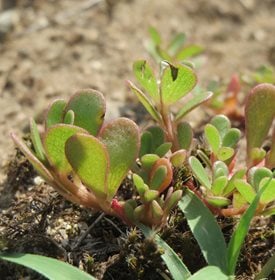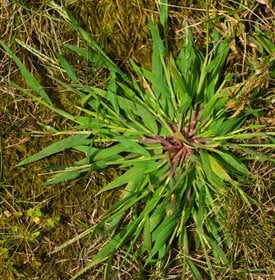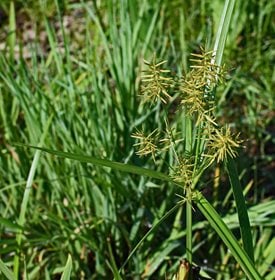Natural Methods to Get Rid of Common Garden Weeds
10 ways to control weeds and keep them out of your lawn and garden—including natural weed killers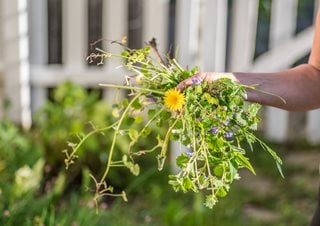
Photo by: David Prahl / Shutterstock.
With so much controversy surrounding the use of chemical weed killers, especially those containing glyphosate, many gardeners are turning to more organic and natural weed control methods to deal with weeds — even if it means more work. If you would like to get rid of weeds without harsh chemicals, here are 10 ways to knock them out.
- NATURAL WEED KILLERS: Post-emergent herbicides target and kill growing weeds. They are available in spray forms that enter through the foliage, or granular forms that are watered into the soil and penetrate through the roots.
There are two types of post-emergent formulas:- Systemic formulas that absorb directly into the plant and are best on perennial weeds
- Contact formulas that kill only the exposed part of the plant and are more useful for annuals or smaller weeds
Common weed killers to try: - NATURAL WEED PREVENTERS: Pre-emegent herbicides affect the weed seeds and don’t allow them to germinate, but they don’t work on existing weeds. Most natural pre-emergents are made from corn gluten meal, and it comes in granular, pellet and liquid formulas. If you’re targeting mainly annual weeds like crabgrass, henbit, chickweed, or purslane, pre-emergents can provide good weed prevention when applied at the right time of year (see Types of Common Weeds below). Read labels carefully and make sure the product you are using not only kills the specific weeds you are targeting, but is also safe for use with the type of lawn you have. Don’t use pre-emergent weed control at a time when you are sowing new grass seed or will be in the near future; some pre-emergents can be effective for months.
Common weed preventers to try: Within each herbicide category (post-emergent or pre-emergent), there are selective and non-selective options. Selective treatments target specific weeds and are non-lethal to other weeds or plants. Non-selective treatments do damage to all plants they come into contact with, good and bad. When using any type of herbicide, remember that ‘organic’ or ‘natural’ doesn’t necessarily mean ‘safe for kids and pets.’ Treat all products carefully, read labels, and follow instructions. - DIY WEED SPRAYS: Homemade salt, vinegar and dish soap mixtures can be effective on some weeds, but should be used sparingly. Although they may sound safe and harmless, the ingredients can be harmful to the soil. Too much salt can cause soil to become toxic to plants and the vinegar can change the soil pH. Also, beware of using vinegar if there are amphibians (frogs, toads, etc.) near, as it can be harmful.
- DIG AND PULL: The key to success when removing weeds by hand is to get all the roots, especially with perennial weeds as they can spread and regrow from roots left behind. There are hand tools and stand-up weeders that make the job easier. Combine some sweat equity with other methods, and you’re sure to see results.
Try these highly rated weeding tools: - HEALTHY LAWN AND MULCH: Maintaining a healthy, thick lawn may prove too much competition for weeds. In flowerbeds, a thick layer of mulch applied after a thorough hand weeding can help prevent weeds from reseeding. Different mulches can consist of: bark chips, wood chips, hulls or bean shells, leaves, or straw.
- Healthy lawn tip: Lawns that receive frequent light watering develop shallow roots, making them weak and susceptible to weed invasion. Water lawns less frequently, but thoroughly and deeply.
- Mulch tip: Cedar mulch also has natural insect-repellent qualities and breaks down slower than other bark or wood mulches.
- LANDSCAPE FABRIC: A heavy landscape or weed control fabric blocks seeds from reaching the soil. Be sure to do a thorough weeding or solarization (see below) first, as seeds that are lurking below the cloth may still find a way up and out, either around the edges or through holes created when inserting plants. Although it’s not attractive when used by itself, you can add a layer of mulch for a more appealing look. Even if seeds do find a home and sprout in the mulch, the fabric will keep roots from taking a firm hold and they will be easily removed. Secure fabric with landscape fabric staples or stakes.
- GROUNDCOVER: Plant a quick-growing groundcover to give the weeds competition for soil and water such as creeping phlox, creeping thyme or dragon’s blood sedum.
- NO-TILL GARDENING: Adopt a no-till approach to keep dormant weed seeds below the surface. (See Garden Soil 101 for more benefits.)
- SOIL SOLARIZATION: This method is good for reclaiming an area that weeds have taken over. It is an environmentally friendly, organic method that uses the sun’s heat to “cook” the weeds and their seeds. It will also kill bacteria, fungi, insects, and other organisms in the soil. This method can’t determine bad organisms from beneficial ones, so it is a good idea to work in some compost before re-planting this area.
- Thoroughly clear the area of plants and debris. Till to uproot weed roots, and rake to remove them and create a smooth surface.
- Water the soil to a depth of 6 inches.
- Cover the area tightly with clear plastic (1 to 4 mil painter’s plastic works great). Don’t use white or black plastic, as they don’t allow enough heat transmission to the soil.
- Bury the plastic around the perimeter of the area or hold the edges down with cinder blocks or bricks.
- Leave in place for 4 to 8 weeks in hottest part of summer.
- Remove plastic and cover with landscape fabric before planting. Carefully cut the holes in the fabric, keeping dirt from getting on top of it.
- Tip: This method works best on soils that hold moisture, allowing it to produce steam every day to kill the weed seeds. If you are solarizing drier or sandy soil, lay drip lines or a soaker hose under the plastic and water regularly. Keep an eye on the amount of water that beads on the underside of the plastic in the morning. When it decreases, it’s time to add water.
- HEAT: A specialized flame torch can be passed over the weed foliage quickly, just long enough to destroy the tissues, and the weed will die. Flame weeding is best for use on annual weeds, as it only kills the above-ground plant and not the roots. When used on perennials, they will often come right back, re-growing from the roots left behind. This method can be quite effective when used on young weeds in walkways or cracks. Use with caution in dry or high fire danger areas.
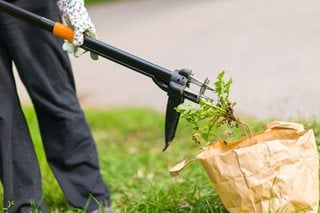
Stand-up weeding tool. Photo by: Jari Hindstroem / Shutterstock.
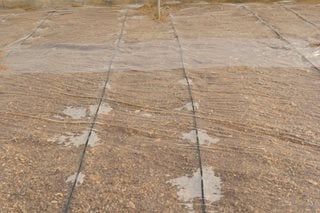
Soil solarization method with drip lines. Photo by: AJCespedes / Shutterstock.
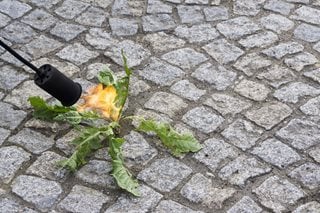
Flame torch method. Photo by: Gabor Tinz / Shutterstock.
Another way to use heat to kill weeds is with boiling water. It will kill any plant growth it touches, so be careful with nearby plants. It will also kill beneficial organisms in the soil. You may find this method to be more successful in killing broadleaf annual weeds, but not as effective in controlling perennial weeds. It is, however, quite useful for weeds growing between pavers or bricks, or in cracks in walkways or driveways. Use caution when transporting and pouring the boiling water.
TYPES OF COMMON WEEDS & HOW TO TREAT THEM
Weeds fall into categories just like other plants: annual or perennial, and broadleaf or grassy. Determining which group you’re targeting will help determine how and when to treat them, giving you better weed control.
- Annuals grow from seed each year and die off at the end of the season or are killed by the first frost.
- Perennials come back year after year and spread by seeds and roots.
*Do not apply pre-emergents if you are planning on seeding your lawn in the near future, as they can also keep your grass seed from sprouting. Some pre-emergents can last for months.



